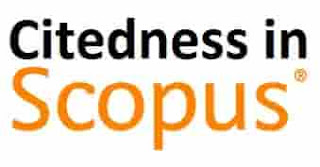 |
 |
 |
 |
||
 |
Mudra: Jurnal Seni Budaya adopts the Committee on Publication Ethics (COPE) position on authorship and AI tools and aligns its practices with international standards for transparency, responsibility, and integrity in the use of artificial intelligence in scholarly publishing.
Applicability: This policy applies to all submissions, accepted manuscripts, and published content, including text, images, figures, datasets, audio-visual elements, and supplementary materials, where AI tools are used for generation, analysis, editing, translation, visualization, or review.
Core principles: AI tools cannot be authors, and authors remain fully responsible for all content produced or edited using AI; transparency in AI use is mandatory.
Ethical alignment: The policy follows COPE’s position that AI tools are not legal entities, cannot accept accountability, and cannot fulfill authorship requirements or manage conflicts of interest, copyright, or licenses.
Non-authorship of AI tools: AI systems (e.g., large language models, image generators) must not be listed as authors or co-authors under any circumstances because they cannot take responsibility for the work or manage ethical and legal obligations.
Author responsibility: Human authors are fully responsible for the accuracy, originality, ethical compliance, and integrity of all manuscript content, including parts generated or edited with AI, and are liable for any breach of publication ethics.
Critical revision: When AI-generated text is used, authors must critically review and revise it for intellectual substance and accuracy to meet standard authorship criteria, as reflected in prevailing editorial practices that implement COPE’s guidance.
Permissible uses:
Language support: Grammar, clarity, translation, and style editing.
Workflow assistance: Citation formatting checks, reference management, and metadata organization.
Visualization: Generating charts from author-provided data, with tools named in captions and methods described.
Idea organization: Outlining and summarizing, provided original analysis is authored by humans. These uses are acceptable only with full transparency and human verification.
Prohibited uses:
Data fabrication/manipulation: Creating, altering, or falsifying research data, measurements, images (e.g., blots), or audio-visual evidence.
Undisclosed content generation: Submitting AI-generated text or media as original author work without disclosure and critical revision.
Style imitation of identifiable creators: Generating images or texts that reproduce distinctive artistic styles without rights and acknowledgment. These practices violate ethical standards and will be sanctioned.
Disclosure requirements:
Location of disclosure: Detail AI use in the Methods, Acknowledgments, or a dedicated “AI Use” subsection (for creative practice, also in captions or notes).
Specifics to disclose: Tool names and versions, purposes (e.g., translation, summarization, figure rendering), prompts when material is substantively shaped by AI, and the human verification steps taken.
Records: Maintain draft histories and prompts for editorial inspection when requested
AI use statement: Requirement: Include a clear AI use statement at submission and in the manuscript. Example: “We used [Tool, Version] for language editing/translation; all content was reviewed and revised by the authors.”
Figure and media captions: Requirement: List any generative or rendering tools used to produce figures from original data, with methods for verification and accuracy checks.
Data and provenance: Requirement: Provide provenance for datasets and media; disclose any algorithmic processing and ensure it does not misrepresent original materials.
Screening: Approach: Editors may use similarity checks and targeted review to identify undisclosed AI-generated or manipulated content; reviewers can confidentially flag concerns for investigation in line with COPE-aligned practices.
Clarifications and corrections: Process: If AI use is insufficiently disclosed or content accuracy is questionable, authors will be asked to clarify, correct, or provide documentation of human verification.
Sanctions: Pre-publication: Revisions for minor omissions; rejection for significant undisclosed or prohibited AI use. Post-publication: Corrections, expressions of concern, or retractions for material breaches; submission embargoes may apply for serious offenses, consistent with ethical publishing norms.
Cultural sensitivity: Requirement: When using AI to process or present cultural heritage materials (e.g., performances, ritual documentation), ensure rights, consent, and accurate contextualization; avoid AI transformations that distort meaning or misattribute authorship.
Attribution and rights: Requirement: Credit cultural practitioners, communities, and custodians; obtain permissions for third-party materials; disclose any AI transformations applied to images, audio, or texts to preserve provenance and integrity.